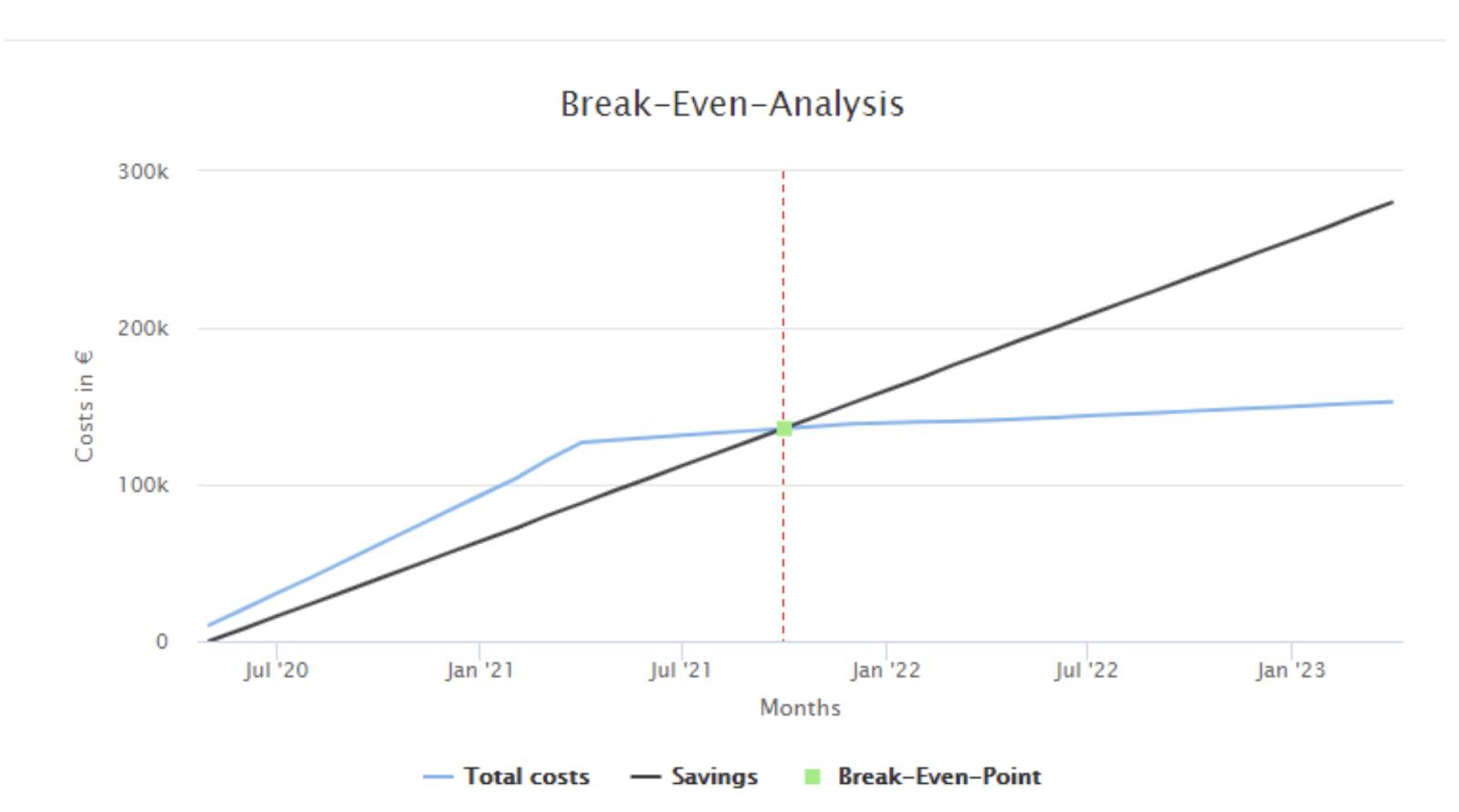Estimate Financial Costs and ROI for Candidate RPA Processes
Learning Objectives
After completing this unit, you’ll be able to:
- Identify the sections of the Finance Analysis view.
- Explain the break-even point.
In this unit, you explore how to track project expenditures and forecast project costs and savings.
Finance Analysis View in MuleSoft RPA Manager
MuleSoft RPA Manager provides you with a Finance Analysis view for all projects actively in development or in production. The Financial Analysis view allows you to easily track your project expenses—past, present, and future—and autogenerate a financial forecast based on values supplied. The Finance Analysis view is composed of the following three sections.
- Break-Even-Analysis
- Cost Evaluation
- Finance Analysis: Cost entries

These sections are presented in order of most aggregated information. While this helps you quickly review the financial analysis information throughout the development lifecycle, exploring the different sections in reverse order helps show how they fit together.
Finance Analysis: Cost Entries
The Finance Analysis: Cost Entries section provides real and potential short-term and long-term costs involved in creating and operating the RPA process. Additionally, you can modify the expected frequency at which your process runs. Combined, these enable MuleSoft RPA Manager to forecast the cost of creating and maintaining the RPA process.
The following table identifies the purpose of the four input types on the Cost Entries page.
| Input |
Description |
|---|---|
|
Months |
Specifies the time span for the financial analysis. |
|
Investment |
Allows you to specify short-term costs for the project. When created, you note the total investment and depreciation period. MuleSoft RPA Manager then takes the total investment cost and divides it by the depreciation period to determine the average monthly cost. |
|
Forecast: Expected monthly process runs |
Allows you to modify the expected run frequency of your RPA process. |
|
Monthly operating costs |
Allows you to specify long-term operating costs associated with the RPA process. |
Cost Evaluation
The Cost Evaluation section is designed to help you assess the net profitability of the RPA process on a monthly basis. It uses the values you provided in the Financial Analysis: Cost entries section to calculate both the fixed costs per month (represented by a green line) and the total costs per month (represented by a blue line) over a specified number of months.
It also combines the actual costs for RPA processes already deployed to MuleSoft RPA Bot instance and the expected number of process runs per month with the cost of performing the business process manually. This calculates the savings per month (represented by a black line). The graph then calculates the net profit per month (represented by the orange line) by taking the difference between the black line and the blue line.

Break-Even-Analysis
Finally, you are ready to explore the Break-Even-Analysis section. This graph uses the monthly savings and the monthly total costs to calculate the cumulative savings and total costs. This is more representative of the actual costs and savings of transitioning your business process to RPA because it captures all historical costs and savings rather than just those for a single month.
Additionally, this graph allows you to quickly identify the point in time, if ever, at which the RPA process saves your company more money than it costs (represented by the blue line). This point is captured by the time when the savings (represented by the black line) surpasses the total costs. This plot on the graph is called the break-even point.

RPA is intended to be more than a fun technology. It should save your company time and money. Fortunately, MuleSoft RPA Manager’s financial analysis tool is designed to help you easily assess the value of your RPA process.
Wrap It Up
In this module, you first learned how to propose candidate business processes for automation using RPA. Next, you learned how to evaluate these processes to determine the potential benefit gained by automating them. You then learned how to approve a process. Finally, you wrapped up the module by addressing how to properly configure an RPA process project for development using MuleSoft RPA.